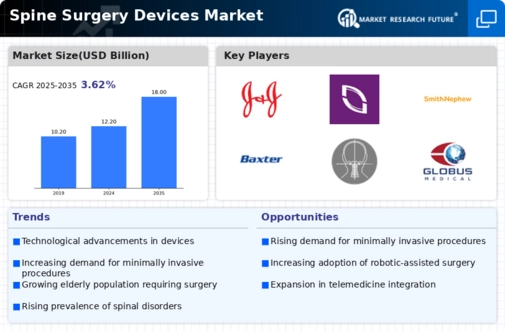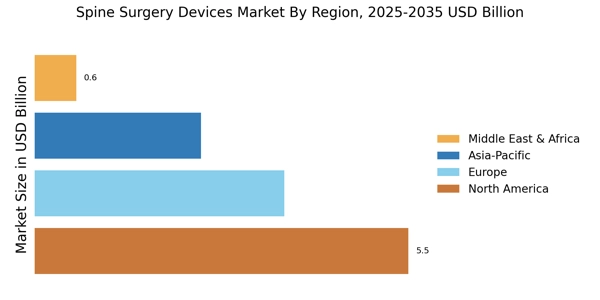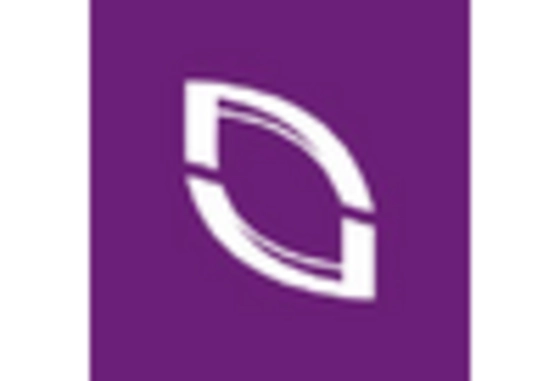Growing Awareness of Spine Health
The growing awareness of spine health among the general population is driving the Spine Surgery Devices Market. Educational campaigns and initiatives by healthcare organizations are emphasizing the importance of spinal health and the potential benefits of surgical interventions. As individuals become more informed about treatment options for spine disorders, the demand for surgical solutions is likely to increase. This heightened awareness is particularly relevant in regions with high rates of sedentary lifestyles, where back pain and related disorders are prevalent. Consequently, the Spine Surgery Devices Market is expected to benefit from this trend, as more patients seek surgical options to alleviate their conditions.
Increasing Healthcare Expenditure
Rising healthcare expenditure across various regions is a significant driver of the Spine Surgery Devices Market. Governments and private sectors are investing heavily in healthcare infrastructure, leading to improved access to advanced surgical procedures. This trend is particularly evident in emerging economies, where increased disposable income allows for greater investment in healthcare services. As healthcare systems evolve, the demand for innovative spine surgery devices is likely to rise. Reports indicate that healthcare spending is expected to grow at a rate of 7% annually, further fueling the growth of the Spine Surgery Devices Market. This financial commitment to healthcare is anticipated to enhance the availability of cutting-edge surgical technologies.
Rising Incidence of Spine Disorders
The increasing prevalence of spine disorders, such as herniated discs and spinal stenosis, is a primary driver of the Spine Surgery Devices Market. According to recent data, approximately 80% of adults experience back pain at some point in their lives, leading to a surge in demand for surgical interventions. This trend is further exacerbated by an aging population, as older individuals are more susceptible to degenerative spine conditions. The Spine Surgery Devices Market is projected to witness substantial growth, with estimates suggesting a compound annual growth rate of around 5% over the next several years. As healthcare providers seek effective solutions for these conditions, the demand for advanced surgical devices is likely to increase, thereby propelling market expansion.
Expansion of Outpatient Surgical Centers
The expansion of outpatient surgical centers is emerging as a key driver of the Spine Surgery Devices Market. These facilities offer a cost-effective alternative to traditional hospital settings, allowing for quicker procedures and shorter recovery times. As more patients opt for outpatient surgeries, the demand for specialized spine surgery devices is likely to increase. This trend is supported by advancements in surgical techniques and anesthesia, which enable safe and efficient outpatient procedures. The Spine Surgery Devices Market is poised for growth as outpatient centers continue to proliferate, providing patients with accessible and convenient options for spine surgery.
Technological Advancements in Surgical Devices
Technological innovations play a crucial role in shaping the Spine Surgery Devices Market. The advent of advanced imaging techniques, such as intraoperative CT and MRI, enhances surgical precision and outcomes. Additionally, the integration of minimally invasive surgical techniques has revolutionized spine surgery, reducing recovery times and improving patient satisfaction. The market is witnessing a shift towards the adoption of smart surgical instruments equipped with sensors and data analytics capabilities. These advancements not only improve surgical efficiency but also contribute to better patient outcomes. As a result, the Spine Surgery Devices Market is expected to grow significantly, with a projected market value reaching several billion dollars by the end of the decade.


















Leave a Comment